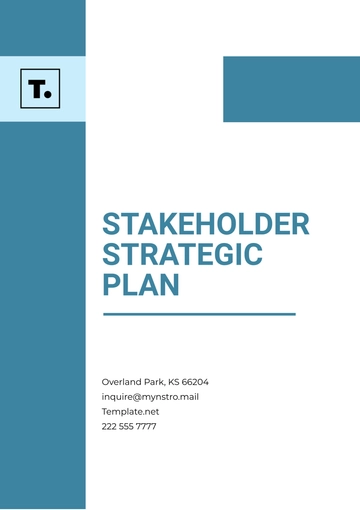Free Aesthetic Sales Growth Strategic Plan

Prepared By: [Your Name]
Date: October 2060
I. Executive Summary
The Aesthetic Sales Growth Strategic Plan outlines strategic initiatives to drive revenue growth for [Your Company Name] over the next five years (2060–2065). Our goal is to expand our market presence, increase customer acquisition and retention, and boost profitability through innovative service offerings, personalized customer experiences, and cutting-edge digital marketing strategies. With a robust market analysis and clear sales objectives, this plan sets the foundation for sustained growth in the rapidly evolving aesthetic industry.
Key Objectives:
Achieve a 30% annual revenue growth by 2065.
Increase customer retention by 20%.
Expand into three new geographic markets by 2062.
Introduce five new aesthetic services by 2063.
II. Market Analysis
The aesthetic industry is forecasted to grow significantly, driven by advancements in non-invasive procedures and increasing demand for personalized cosmetic treatments. [Your Company Name] is positioned to capitalize on this trend by targeting high-value clients through advanced digital marketing and offering innovative, client-specific services.
A. Key Market Trends (2060–2065):
Non-surgical treatments like injectables and lasers will grow by 50%.
Growing demand for personalized skincare solutions.
Greater focus on male clients and Gen Z.
Rising preference for eco-friendly and sustainable products.
B. Target Audience:
Affluent professionals (ages 30–60).
Millennials and Gen Z seeking preventive treatments.
Male clientele exploring wellness and aesthetic solutions.
Eco-conscious customers prioritize sustainability.
C. Competitor Landscape:
Competitor | Focus | Strengths | Weaknesses |
|---|---|---|---|
Competitor A | Premium services | High-quality treatments | Lacks personalized client engagement |
Competitor B | Budget treatments | Affordable options for the mass market | Little emphasis on luxury and long-term care |
[Your Company Name] | Personalized approach and advanced technology | Strong client care and tailored experiences | N/A |
III. Sales Goals and Objectives
Our sales goals are designed to support growth while remaining achievable. By 2065, we aim to position [Your Company Name] as a leading provider of premium aesthetic treatments through a blend of innovative service offerings and strategic customer outreach.
A. Sales Goals (2060–2065):
Total Revenue Target: Boost revenue from $5M in 2060 to $15M by 2065.
Customer Growth: Grow the client base from 10,000 to 20,000 by 2065.
New Services: Launch 5 new aesthetic treatments within the next three years, focusing on high-demand, non-invasive options.
B. KPIs:
Monthly customer acquisition: Increase by 15%.
Average client spend: Raise by 25% through personalized upselling.
Customer satisfaction score: Maintain at 95%+ across all services.
IV. Sales Strategies
To achieve our sales goals, we will implement a mix of marketing, service expansion, and customer experience initiatives designed to attract and retain clients while maximizing profitability.
A. Digital Marketing Expansion:
Launch a comprehensive AI-driven marketing campaign targeting niche audiences based on personalized beauty trends.
Influencer partnerships with key aesthetic figures in emerging markets (e.g., eco-conscious beauty).
Enhance the website with AI-driven consultations and booking systems, creating a seamless customer journey.
B. Service Diversification:
Introduce 5 new non-invasive treatments, focusing on sustainability and innovation, including AI-based skin analysis services.
Expand luxury service packages tailored to premium clientele with long-term treatment plans.
Create personalized skincare products that use AI to track and adjust based on individual client skin metrics.
C. Customer Retention Programs:
Launch a VIP loyalty program that rewards long-term clients with exclusive offers and priority booking.
Implement post-treatment care programs, ensuring that clients receive personalized follow-ups and special discounts for returning customers.
D. Geographic Expansion:
Target three new cities by 2062, starting with major urban centers with high demand for non-surgical aesthetic services.
Build pop-up clinics to test new markets before establishing permanent locations.
V. Action Plan
The action plan outlines the specific steps we will take to implement our growth strategies from 2060 to 2065.
A. Timeline:
Timeline | Action Item |
|---|---|
Q1 2061 | Launch the first round of AI-driven marketing campaigns |
Q3 2061 | Introduce new luxury service packages for high-value clients |
Q2 2062 | Open the first pop-up clinic in a new target city |
Q4 2062 | Launch the VIP loyalty program |
Q3 2063 | Introduce the first of 5 new non-invasive treatments |
Q1 2064 | Begin offering personalized skincare products |
Q2 2065 | Open the final two permanent clinics in targeted cities |
B. Responsibilities:
Sales Director: Oversee revenue growth and ensure targets are met.
Marketing Team: Drive AI-powered campaigns and develop influencer partnerships.
Service Development Team: Create and launch new treatment offerings.
Operations Team: Manage geographic expansion and pop-up clinics.
VI. Financial Projections
The financial projections provide a detailed forecast of revenue, costs, and return on investment for the proposed strategies.
A. Revenue Projections (2060–2065):
Year | Revenue Projection |
|---|---|
2060 | $5 million |
2061 | $6.5 million |
2062 | $8 million |
2063 | $10 million |
2064 | $12.5 million |
2065 | $15 million |
B. Cost Breakdown:
Marketing: $1.5 million annually (focused on AI and influencer partnerships).
Service Development: $1M/year (for new treatments and product development).
Expansion: $3 million (for geographic growth and pop-up clinics).
C. ROI:
Expected return on investment by 2065: Three hundred percent, calculated based on revenue growth and strategic execution.
VII. Evaluation and Monitoring
To ensure the success of the strategic plan, we will regularly monitor key performance indicators and adjust strategies as needed to meet our goals.
A. Monitoring Process:
Monthly Sales Review: Analyze sales, feedback, and market trends.
Quarterly Strategy Meetings: Adjust growth strategies as needed.
Annual Reports: Provide a comprehensive review of sales, customer trends, and market performance.
B. KPIs for Monitoring:
Revenue growth: Track quarterly sales compared to the targets.
Customer retention: Monitor retention rates and satisfaction scores.
New service adoption: Measure the success of newly introduced treatments and products.
- 100% Customizable, free editor
- Access 1 Million+ Templates, photo’s & graphics
- Download or share as a template
- Click and replace photos, graphics, text, backgrounds
- Resize, crop, AI write & more
- Access advanced editor
Elevate your business growth with our Aesthetic Sales Growth Strategic Plan Template from Template.net. This visually appealing, customizable template is perfect for setting sales growth objectives. Easily editable in our Ai Editor Tool, you can personalize this template to create a plan that aligns with your growth strategies while maintaining a professional look.





























